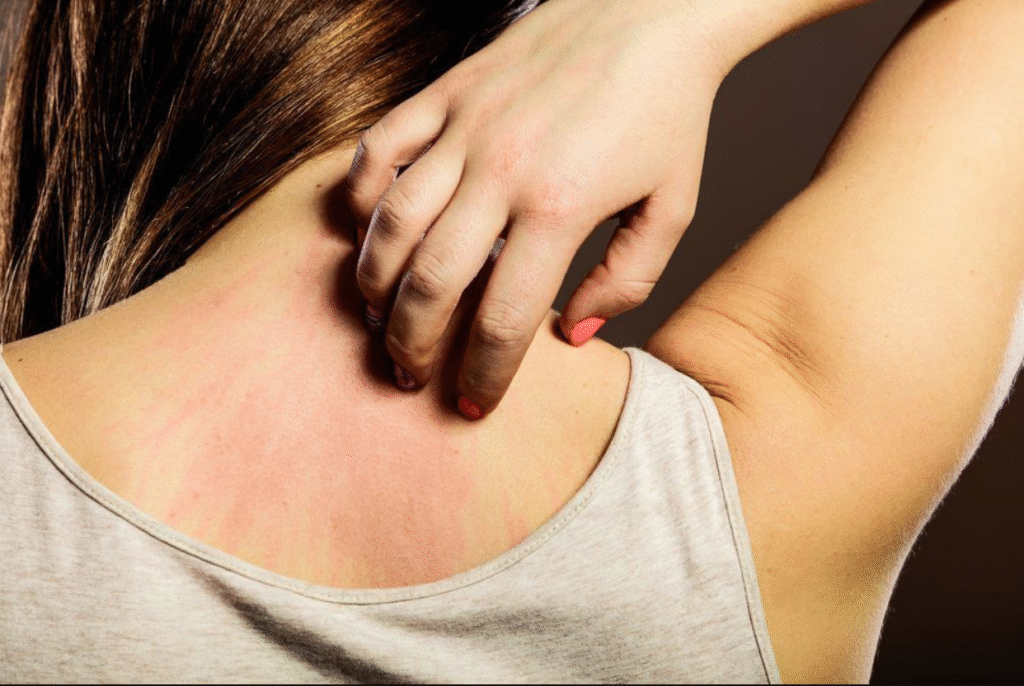You can also try oatmeal baths, cold compresses, or antihistamine creams. These help calm the skin and reduce discomfort.
If home remedies don’t work, talk to your doctor. Some medications may help calm the nerves and reduce the itching.
In rare cases, doctors may prescribe topical steroids or other treatments for rashes. It’s important to treat both the itching and any skin damage caused by scratching.
You should see a doctor if:
- The itching keeps you awake at night
- Your skin shows signs of infection
- Home treatments do not help
- You feel anxious or depressed about your symptoms
Your doctor can help rule out other causes and adjust your fibromyalgia treatment plan. Itching may not go away completely, but it can be managed.
Managing Fibromyalgia Skin Symptoms Every Day
Daily self-care can help reduce itching. Keep a symptom journal to track triggers.
Some people find relief through changes in diet, reducing sugar or inflammatory foods. Others benefit from gentle exercises like yoga or walking.
Mindfulness, stress reduction, and therapy may also lower the intensity of symptoms. It all adds up to a better quality of life.
Final Thoughts
Fibromyalgia affects more than just your muscles and joints. It can make your skin itch, burn, or break out in rashes.
This symptom is real and deserves attention. You are not alone, and help is available. Talk to your doctor, explore treatments, and take care of your skin daily.
Fibromyalgia may bring unexpected challenges, but with the right tools, you can find comfort again.

Fibromyalgia Skin Discoloration: Why Your Skin Turns Purple and What It Means
Living with fibromyalgia is more than just dealing with chronic pain. It can be confusing, exhausting, and even frightening.
You might be used to the fatigue and aches, but seeing your skin turn purple is a new kind of worry. You’re not alone in this. Many people with this illness experience strange and unexpected symptoms. Purple skin can be one of them.
What Is Fibromyalgia?
Fibromyalgia is a chronic condition that causes widespread pain. It also leads to fatigue, sleep issues, and sensitivity to touch.
This condition affects the nervous system, making even small pain signals feel intense. People with this chronic condition often deal with multiple symptoms daily. This can include brain fog, mood swings, and skin sensitivity.
Why Does Skin Turn Purple in Fibromyalgia?
Purple skin is not a classic sign of fibromyalgia. But it can still happen due to related issues.
Poor circulation and nervous system problems are common in fibromyalgia. These can reduce blood flow, especially in hands and feet. When blood flow slows down, the skin can turn bluish or purple.
Possible Causes of Purple Skin
One cause is Raynaud’s phenomenon. This condition makes blood vessels narrow, especially in cold weather or stress.
Another cause could be bruising. People with fibromyalgia often bruise easily, even without noticing an injury. Some medicines used for fibromyalgia can also cause bruising.
Livedo reticularis is a less common cause. It causes a lace-like purple pattern on the skin. This may be linked to autoimmune conditions, which some fibromyalgia sufferers also have.
Is Purple Skin Dangerous?
Sometimes, purple skin is harmless and goes away with warmth. But in other cases, it needs medical attention.
If your skin stays purple, feels cold, or starts hurting, talk to a doctor. These signs could point to a blood flow problem. Serious causes include blood clots or infections, which need quick treatment.
What You Can Do at Home
If your skin turns purple, try warming it gently. Avoid sudden heat, like hot water or heaters.
Keep your hands and feet warm in cold weather. Avoid smoking and caffeine, as they make blood vessels tighten. If you bruise often, talk to your doctor about your medications.
When to See a Doctor
You should always see a doctor if:
- The purple color doesn’t go away.
- The area becomes painful or swollen.
- You feel numbness or tingling.
- You have other symptoms like fever or weakness.
A doctor can check if your symptoms are from fibromyalgia or another issue. They may run tests to rule out circulation or autoimmune problems.
Managing Fibromyalgia and Its Surprises
This chronic condition is unpredictable. One day may be fine, and the next full of strange symptoms.
Purple skin may not be dangerous, but it’s still scary. Understanding the cause helps reduce fear. Always stay alert and communicate with your healthcare team.
Final Thoughts
Fibromyalgia affects your body in many strange ways. Purple skin is just one example.
Don’t ignore it. Listen to your body and take symptoms seriously. With the right care, you can stay ahead of fibromyalgia’s surprises.
If you’re unsure, it’s always better to check with a medical professional. Peace of mind is worth it.












